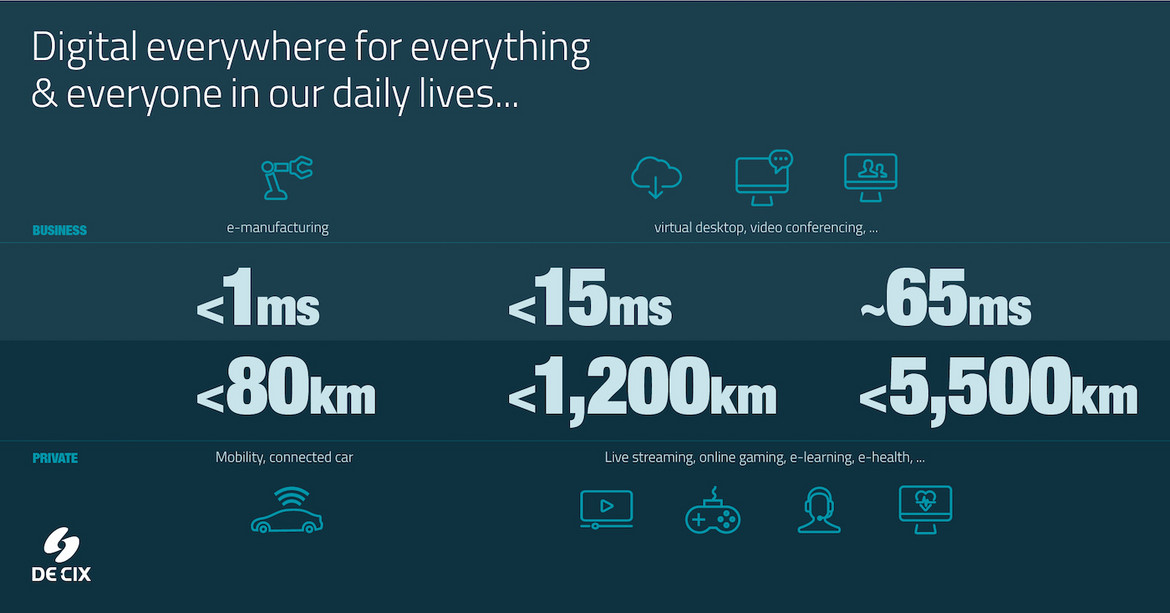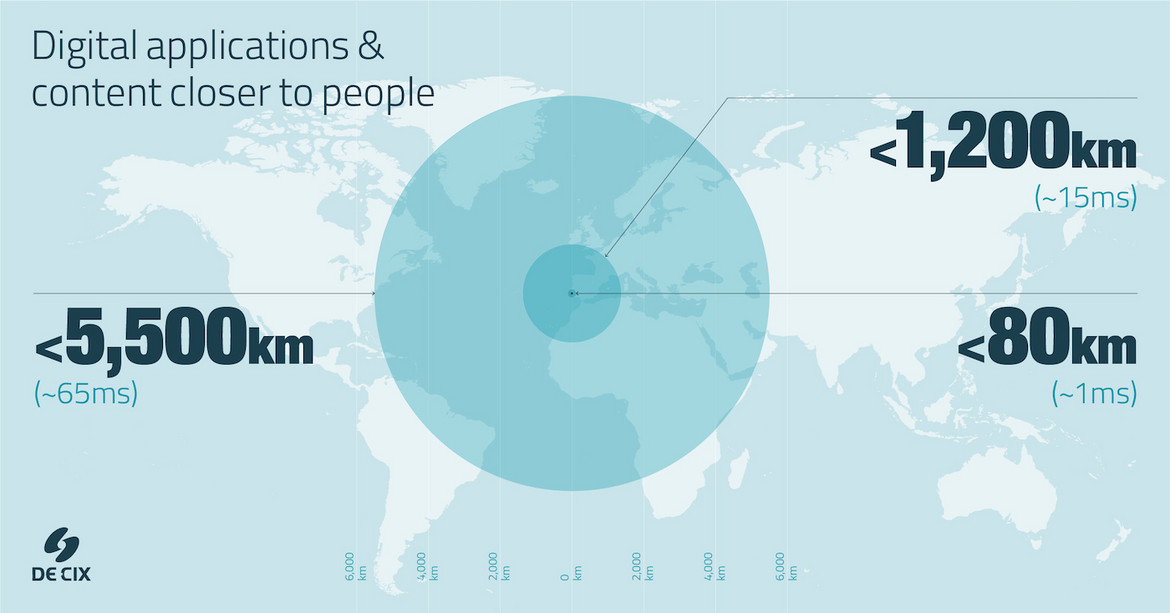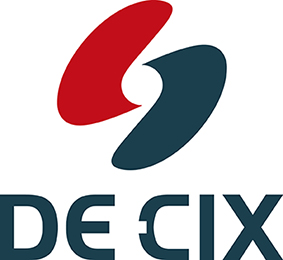Digital Everywhere, for Everyone
Digital business has definitively become the backbone of economic growth for the future, and no sector can afford not to be on the path to digitalization, says Ivo Ivanov, CEO of DE-CIX International.

© Planet Studio | istockphoto.com
A new era of interconnection
We are entering a new era of digitalization – a new era of interconnection – in which digital applications and services will be needed everywhere, for everyone. The year 2021 heralds the beginning of the most exciting digital decade since the original boom of the commercial Internet. Digital business has definitively become the backbone of economic growth for the future, and no sector can afford not to be on the path to digitalization. It's no longer a question of whether you should digitalize. Yes, you should. The faster, the better.
All areas of business and private life rely more heavily today than ever before on digital applications. These have proven their worth in recent months, finding their place in our professional and personal lives. But beyond the virtual desktop and video streaming, specific sectors are also taking leaps ahead with digital applications and services, ranging from e-health to very sophisticated logistics and mobility applications, and on to the finance sector. This transformation has not been caused by the Covid-19 pandemic, but it has been accelerated by it. This accelerated pace of the digitalization of enterprises will become one of the key factors for future economic growth.
As economic activity moves from the analog to the digital sphere, there is one thing that all these applications have in common, and this is related to the purely physical characteristics of the speed of light. In the digital infrastructure industry, we call this “latency”.
Latency is the new currency
Latency has to do with reaction times – the time it takes data to be sent for processing or analysis and for a reaction to occur or a result to be visible. Keeping latency low is what allows you to enjoy online gaming and high-definition online sports streaming in real time, as well as reaping the rewards of modern education in high-quality hybrid schooling. From a business perspective, latency issues cost you money. Productivity related to virtual desktops, conference and video calls, and all that is entailed in working from home is dependent on high-performance interconnection.
A latency of no more than 20 milliseconds is necessary to perform all these daily activities with the level of performance that everybody deserves. Translating this into distance, this means the content and the applications need to be as close to the users as possible. Geographically speaking, applications like interactive online gaming and live streaming in HD/4K need to be less than 1,200 km from the user.

Figure 1: Latency is decisive for the performance of general purpose and critical applications. © DE-CIX
Industrial activities like remote robotics, AI-supported research and development, and prototyping and developing innovative products would also not be conceivable without the performance, security, and resilience that comes with such low latencies. This means that latency in digital services and applications is truly revenue related.
But the applications that our digital future will be based on will demand even faster reaction times. Critical applications – like e-health, the connected car, and financial trading – need response times in the low millisecond range. They also demand a very high level of resilience and security to ensure the seamless transmission of data. Critical applications also entail highly sensitive data – be that business secrets or personal health records – which needs to be secured in a safe environment. Smart IoT applications, and critical applications requiring real-time responses need to be performed within a range of 50-80 km from the user.
Interconnection as success factor for future business
In the digital world, resiliency is business critical. Enterprises that are digitalizing their processes, products, and services require both the lowest latency and the highest resilience and security. By leveraging the benefits of interconnection, an enterprise can easily connect directly with the many networks it needs to share data with. Connecting to a high-performance Internet Exchange like those operated by DE-CIX put an enterprise right there, where the economy of the future is playing out – bringing latency down and increasing resilience. High-performance, secure interconnection is becoming a critical success factor for the future of business.
Resilience and security in interconnection translate directly into uninterrupted productivity. This is achieved through enterprise interconnection solutions that connect directly to the required application or compute source – for example, to the many cloud services an enterprise makes use of (e.g. through DE-CIX DirectCLOUD), or to applications such as those available through Microsoft 365 (e.g. using the Microsoft Azure Peering Service for direct enterprise connectivity via DE-CIX). In this way, latency is minimized and resilience is ensured.

Figure 2: To ensure the best performance, digital applications need to get closer to people and business, everywhere. © DE-CIX
What do enterprises need from interconnection? Use case – mobility
When it comes to the interconnection needs of enterprises, the mobility sector is a clear trailblazer. The connected car is an ecosystem of data, entailing a huge variety of types of data. Examples include data relating to physical safety and the physical conditions on the road, data for improving traffic management, data on the status and maintenance of the car, entertainment, and so on.
The immense volume of car-related data can be divided into two main types: data in the car, and data outside of, or leaving, the car. 70 percent remains in the car and can be off-loaded in a quiet moment in the garage. But the other 30 percent is critical for safety and performance on the road and is extremely latency-sensitive. This data relates to the communication between cars (car2car), as well as with the cloud (car2cloud) and the environment (car2environment data – e.g., interaction with different sensors and signs on the road). This data requires high-performance, low-latency, and secure interconnection services between the different cars on the road, and between the networks of the car manufacturer, and all of these other data suppliers and receivers.
The need to control the data value chain
The approach for automotive manufacturers in the past has been a best-effort solution involving MPLS and IP transit (upstream), with no end-to-end control of the traffic flows between the car and the networks that wish to deliver data to the car or receive data from the car. This creates performance challenges because the more intermediates occur between the two networks, the worse the performance is and the higher the latency is. This also creates security issues, as well as compliance issues – because if you do not control the data value chain, you cannot control compliance.
Last but not least, if you consider the hundreds – potentially thousands – of organizations that want or need to deliver data into the car and receive data generated by the hundreds of sensors within the car, this results in a significant complexity issue. If a car company wants to interconnect with all these partners and suppliers, the result of the old approach is literally thousands of bilateral interconnections and relationships – something that nobody can efficiently manage.
The logic of interconnection – making the complexity disappear like magic
This can be solved using existing logic – the logic of interconnection as we have it in our DE-CIX ecosystems. Direct interconnection between the parties, using the very efficient principle of one-to-many or many-to-many, aggregating the traffic instead of using multiple bilaterals. It works like magic – the complexity simply disappears. We see one clean environment where the car network can interconnect with all the participants that want to deliver data to the car and receive data from the car, all in a single protected and highly efficient environment.
On the DE-CIX platform, an enterprise – in the use case above an automotive manufacturer, but the approach is independent of sector – can set up its own Closed User Group, dictating the policies they need fulfilled in terms of performance, security, compliance, etc. Within this environment, everything is protected, and, at the same time, very efficiently interconnected – capitalizing on the advantages of existing ecosystems, such as proximity of networks and therefore reduced latency. This solution provides an answer to how, in a closed environment, an enterprise network can interconnect with other networks, reducing the complexity, increasing the security, improving the performance, and creating manageable compliance.
Interconnection is a natural step in the evolution of business
The ecosystems of DE-CIX are the natural home for enterprise ecosystems. Today, we have 2,100+ connected networks across the globe, and these networks serve the finance industry, the automotive industry, the healthcare industry – they already participate in these and many other value chains. That means they are already on the spot, within spitting distance – an enterprise can easily bring together all partners in one place, making interconnecting with them fast and easy, secure, resilient, and using very low latency. Therefore, using the DE-CIX ecosystems to locate protected new stakeholder-specific ecosystems, with all the protection enterprises require and expect, is a natural step.
The enterprise of the future is digital. Latency is the new currency for the exciting next generation of applications and services. Interconnection will be even more important in the future, whoever and wherever you are in the modern world.
Ivo A. Ivanov is CEO of DE-CIX International and COO of DE-CIX Group AG, with more than 10 years’ experience in the regulatory, legal, and commercial Internet environment. Ivo joined DE-CIX in January 2007. In recent years, he has been deeply involved in the establishment of DE-CIX sites in Istanbul, Palermo, Madrid, Marseille, New York, Dallas, Dubai (UAE-IX powered by DE-CIX), as well as Mumbai (Mumbai IX powered by DE-CIX), and several DE-CIX consultancy projects in Africa, Asia, and Europe.
Ivo has an educational background focused on law and business. Fluent in German, English, Russian, and Bulgarian, he graduated from a German business school in 1995 and holds two law degrees, from the Universities of Sofia (Bulgaria) and Bonn (Germany). After graduation, he worked as a lawyer, with a focus on e-commerce law, IP law, telecommunications law, and data protection law.
Please note: The opinions expressed in Industry Insights published by dotmagazine are the author’s own and do not reflect the view of the publisher, eco – Association of the Internet Industry.





